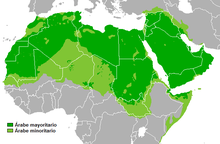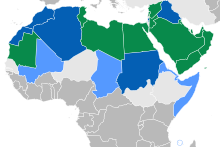Arabic
Arabic (Arabic: العَرَبِيَّة, al-ʻarabiyyah [ʔalʕaraˈbijːah ] or Arabic: عَرَبِيّ ʻarabiyy [ʕaraˈbijː ]) is a Central Semitic language that was first spoken in Iron Age northwestern Arabia and is now the lingua franca of the Arab world. Arabic also is a liturgical language of 1.7 billion Muslims. It is one of six official languages of the United Nations. It is named after the Arabs, a term initially used to describe peoples living from Mesopotamia in the east to the Anti-Lebanon mountains in the west, and from northwestern Arabia to the Sinai in the south.
The modern written language (Modern Standard Arabic) is derived from the language of the Quran (known as Classical Arabic or Quranic Arabic). It is widely taught in schools and universities, and is used to varying degrees in workplaces, government, and the media. The two formal varieties are grouped together as Literary Arabic, which is the official language of 26 states and the liturgical language of Islam. Modern Standard Arabic largely follows the grammatical standards of Quranic Arabic and uses much of the same vocabulary. However, it has discarded some grammatical constructions and vocabulary that no longer have any counterpart in the spoken varieties, and has adopted certain new constructions and vocabulary from the spoken varieties. Much of the new vocabulary is used to denote concepts that have arisen in the post-Quranic era, especially in modern times.
...
Wikipedia



